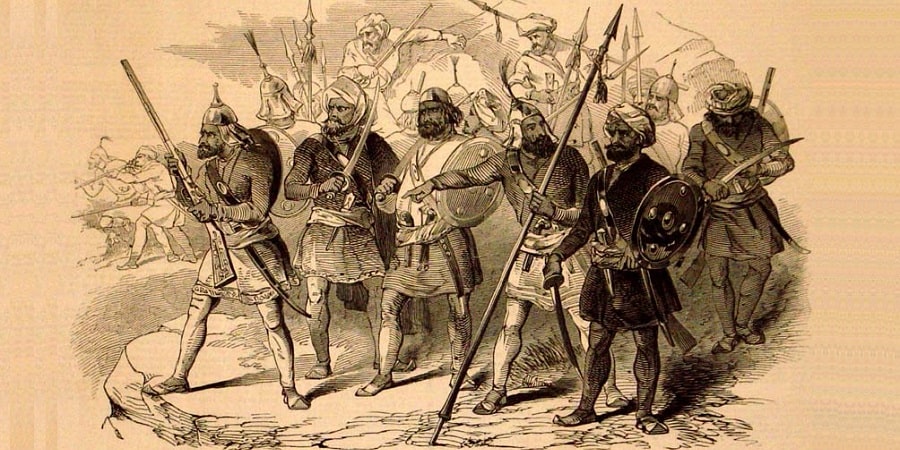the sindhi culture
The Flourishing Millennia of Sindhi Civilization: A Tapestry of Conquests, Migrations, and Cultural Renaissance

The history of the Sindhi people is an epic journey that unfolds across the millennia, drawing from the fertile soils of the Indus Valley Civilization—the cradle of one of the oldest civilizations known to humanity. Rooted in the historical richness of 3300–1300 BCE, Sindh, strategically positioned along the sinuous path of the mighty Indus River, became witness to the ebb and flow of empires, the seismic force of conquests, and the cultural flourish that has defined this resilient community.
Alexander's Odyssey and Hellenistic Influences (4th Century BCE):
The Hellenistic echoes of Alexander the Great's conquests reverberated through Sindh in the 4th century BCE. The Seleucid Empire, inheriting the reins of power, ushered in an era where Greek, Persian, and indigenous influences converged. Sindh, a crucible of cultural amalgamation, became a testament to the resilience of its people in the face of external dominance.
Mauryan and Gupta Tapestry (3rd Century BCE – 6th Century CE):
As the embers of Hellenistic influence dimmed, Sindh found itself within the embrace of the Mauryan and Gupta Empires from ancient India. The region's prosperity beckoned, resulting in a rich tapestry of cultural intermingling. Temples, trade routes, and the fluid exchange of ideas contributed to the dynamic identity shaping within the heart of Sindh.
The Arab Tapestry and the Islamic Epoch (8th Century CE Onward):
The 8th century heralded a new epoch with the advent of the Arab Umayyad Caliphate. Arab rule not only altered the political landscape but also introduced Islam to Sindh. This religious transformation, furthered by the Abbasid Caliphate, wove Islamic threads into the socio-cultural fabric of Sindh, creating a distinctive syncretic identity.
Medieval Turbulence: Ghaznavids, Ghurids, and Beyond (11th–13th Century):
The medieval period saw Sindh as a battleground for the Ghaznavid and Ghurid invasions in the 11th and 12th centuries. Mahmud of Ghazni's military incursions left an indelible mark on the political destiny of the region. Yet, amidst the turbulence, Sindhi culture persisted, adapting and evolving.
Mughal Zenith and Cultural Resurgence (16th Century):
The 16th century ushered in the Mughal era, characterized by relative stability under the enlightened rule of Akbar the Great. This period witnessed a cultural resurgence, evident in the architectural marvels, artistic endeavors, and literary accomplishments that marked Sindh as a vibrant center within the Mughal Empire.
The Twilight of Empires and British Annexation (18th–19th Century):
The 18th century brought the decline of the Mughal Empire, making way for regional powers. Sindh found itself at the crossroads of historical forces, eventually succumbing to the British East India Company's annexation in 1843. The decisive Battle of Miani and the Battle of Dubbo etched the end of an era, paving the way for a period of British colonial rule characterized by infrastructure development and administrative changes.
Partition and Modern Transformations (20th Century):
The 20th century brought about seismic transformations. The partition of British India in 1947 delineated new boundaries, with Sindh, predominantly Muslim, becoming part of Pakistan. This geopolitical shift led to mass migrations, as Hindus left Sindh for India and Muslims migrated from India to Sindh, imparting new layers to the cultural landscape and reshaping demographics.
This intricate historical odyssey has profoundly shaped the Sindhi identity, contributing to the diverse tapestry of their culture. Today, Sindh stands as a province in Pakistan with a rich historical and cultural heritage. The Sindhi people, with their resilience and adaptability, continue to celebrate their traditions, navigate contemporary challenges, and contribute to the unfolding narrative of Sindh's history. The echoes of ancient civilizations, conquests, and migrations resonate in the vibrant cultural mosaic that defines the Sindhi experience—a testament to the enduring spirit of a people shaped by the currents of time.